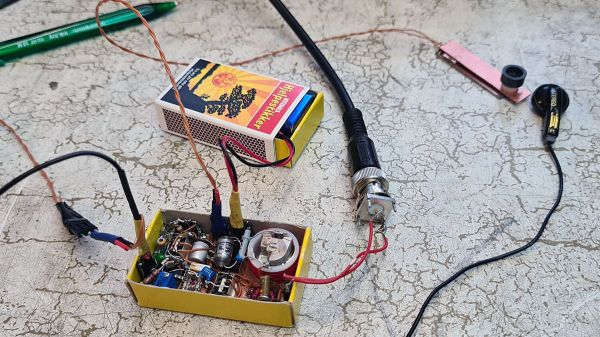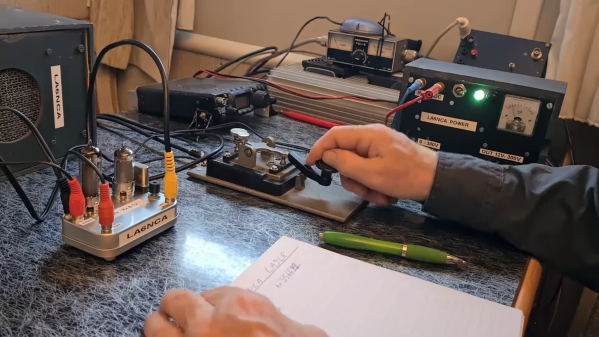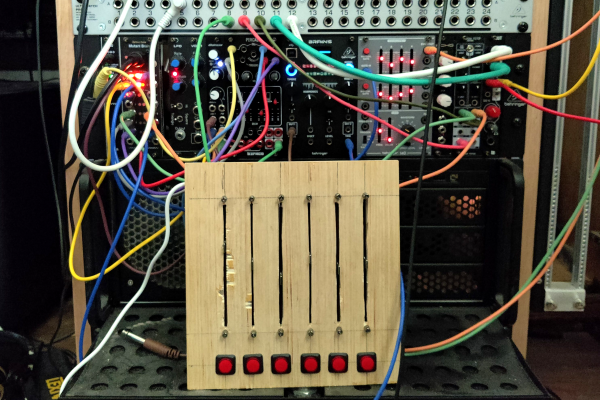There are plenty of audio mixers on the market, and the vast majority all look the same. If you wanted something different, or just a nice learning experience, you could craft your own instead. That’s precisely what [Something Physical] did.
The build was inspired by an earlier 3-channel mixer designed by [Moritz Klein]. This project stretches to eight channels, which is nice, because somehow it feels right that a mixer’s total channels always land on a multiple of four. As you might expect, the internals are fairly straightforward—it’s just about lacing together all the separate op-amp gain stages, pots, and jacks, as well as a power LED so you can tell when it’s switched on. It’s all wrapped up in a slant-faced wooden box with an aluminum face plate and Dymo labels. Old-school, functional, and fit for purpose.
It’s a simple build, but a satisfying one; there’s something beautiful about recording on audio gear you’ve hewn yourself. Once you’ve built your mixer, you might like to experiment in the weird world of no-input mixing. Video after the break.


















